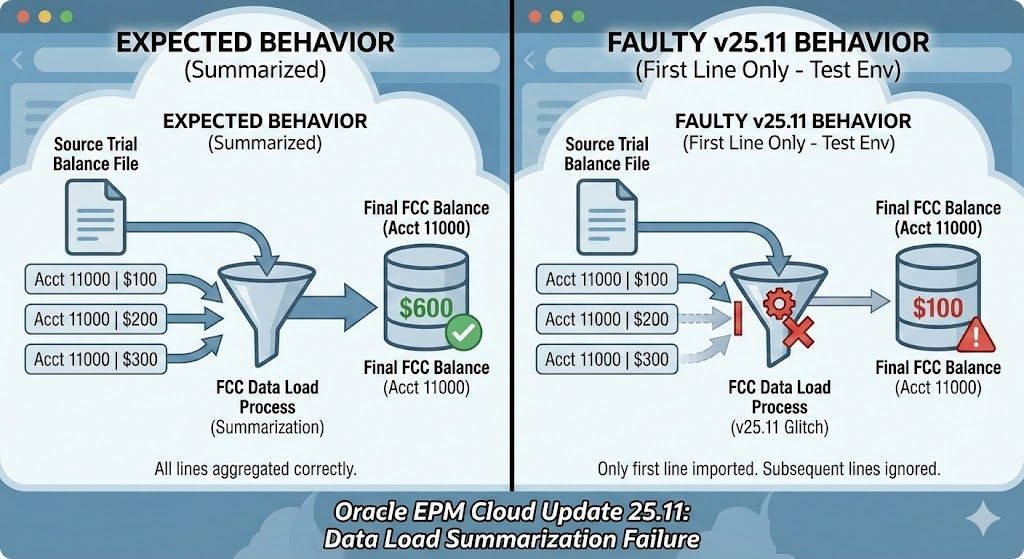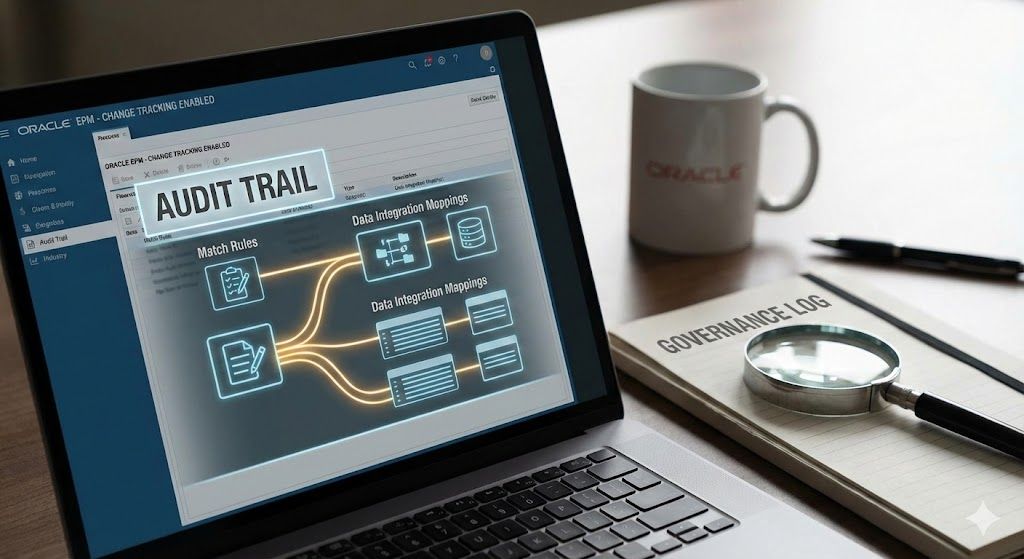Direct Connection vs. Cloud Bridge: Oracle EPM-ERP Subledger Integration - Price and Performance Showdown
Listen to Tresora and Ledgeron's chatting about this blog post:
Optimizing Your Data Flow: Practical Insights into Oracle EPM-Oracle ERP Connectivity
Oracle Enterprise Performance Management (EPM) and Oracle Enterprise Resource Planning (ERP) are powerful systems, and seamless data flow between them is crucial for accurate planning, forecasting, and reporting. When it comes to pulling detailed subledger data from ERP into EPM, you have two primary options: the native direct integration and leveraging Oracle Integration Cloud (OIC). Let's delve into a comparison of these approaches, focusing on the critical aspects of price and runtime.
Native EPM-ERP Subledger Integration: The Direct Route
Oracle EPM offers native integration capabilities to directly connect with subledger reports in Oracle ERP Cloud. This allows for the extraction of granular transaction-level data, providing a deeper understanding of financial performance.
Key Advantages:
- Performance : Direct integration generally boasts faster runtime, as it minimizes the overhead of an intermediary platform. Data moves directly between the systems, reducing latency.
- Simplicity (Relatively) : For straightforward subledger data pulls, the native integration can be configured directly within EPM, potentially reducing the complexity of setting up and maintaining a separate integration platform.
- Cost (Potentially Lower): If your integration requirements are limited to basic subledger data extraction, the native integration might be more cost-effective, as it avoids the subscription costs associated with OIC.
Considerations:
- Limited Transformation: The native integration's transformation capabilities are relatively limited compared to OIC. If complex data transformations or enrichment are required, this approach might not be sufficient.
- Maintenance: Changes to the source subledger reports in ERP may require updates to the EPM integration, potentially leading to maintenance overhead.
- Scalability: For highly complex or high volume integrations the direct connection may not scale as well as OIC.
- Complexity: Setting up the direct connection can be complex, and requires deep knowledge of both EPM and ERP.
Oracle Integration Cloud (OIC): The Versatile Bridge
Oracle Integration Cloud (OIC) is a comprehensive integration platform that provides robust capabilities for connecting various applications, aside from EPM and ERP.
Key Advantages:
- Flexibility and Transformation: OIC offers extensive data transformation, enrichment, and routing capabilities. This allows you to handle complex integration scenarios and tailor the data to your specific EPM requirements.
- Scalability and Reliability: OIC is a cloud-based platform designed for scalability and high availability. It can handle large volumes of data and complex integration flows.
- Pre-built Adapters: OIC provides pre-built adapters for Oracle EPM and ERP, simplifying the integration process.
- Monitoring and Management: OIC offers robust monitoring and management tools, providing visibility into the integration process and enabling proactive issue resolution.
Considerations:
- Cost: OIC is a subscription-based service, which adds to the overall cost of the integration solution.
- Runtime (Potentially Slower): Introducing an intermediary platform can introduce some latency, potentially resulting in slower runtime compared to the native integration for simple extractions. However, OIC's performance is generally excellent, and the added flexibility often outweighs the slight performance trade-off.
- Complexity: OIC introduces another platform to manage and maintain.
- Price and Runtime: A Direct Comparison
Price:
- Native integration: Potentially lower upfront cost, especially for basic integrations. However, consider the cost of internal resources for setup and maintenance.
- OIC: Subscription-based pricing, which can vary depending on usage and features. Factor in the long-term benefits of OIC's scalability and flexibility.
Runtime:
- Native integration: Generally faster for simple subledger data pulls.
- OIC: May introduce slight latency, but offers optimized performance and scalability for complex integrations.
Which Approach Is Right for You?
The best approach depends on your specific requirements:
Choose native integration if:
- You require fast runtime for basic subledger data pulls.
- Your integration requirements are relatively simple.
- You want to minimize upfront costs.
Choose OIC if:
- You require complex data transformations or enrichment.
- You need a scalable and reliable integration solution.
- You value the flexibility and robust features of a dedicated integration platform.
- You require integration with many different systems.
Conclusion:
Both native EPM-ERP subledger integration and OIC offer valuable solutions for connecting your systems. Consider your specific needs, budget, and technical expertise when making your decision. Evaluate the complexity of the data transformations, the volume of data, and the long-term scalability requirements. By carefully weighing the pros and cons, you can choose the integration approach that best aligns with your business goals.






